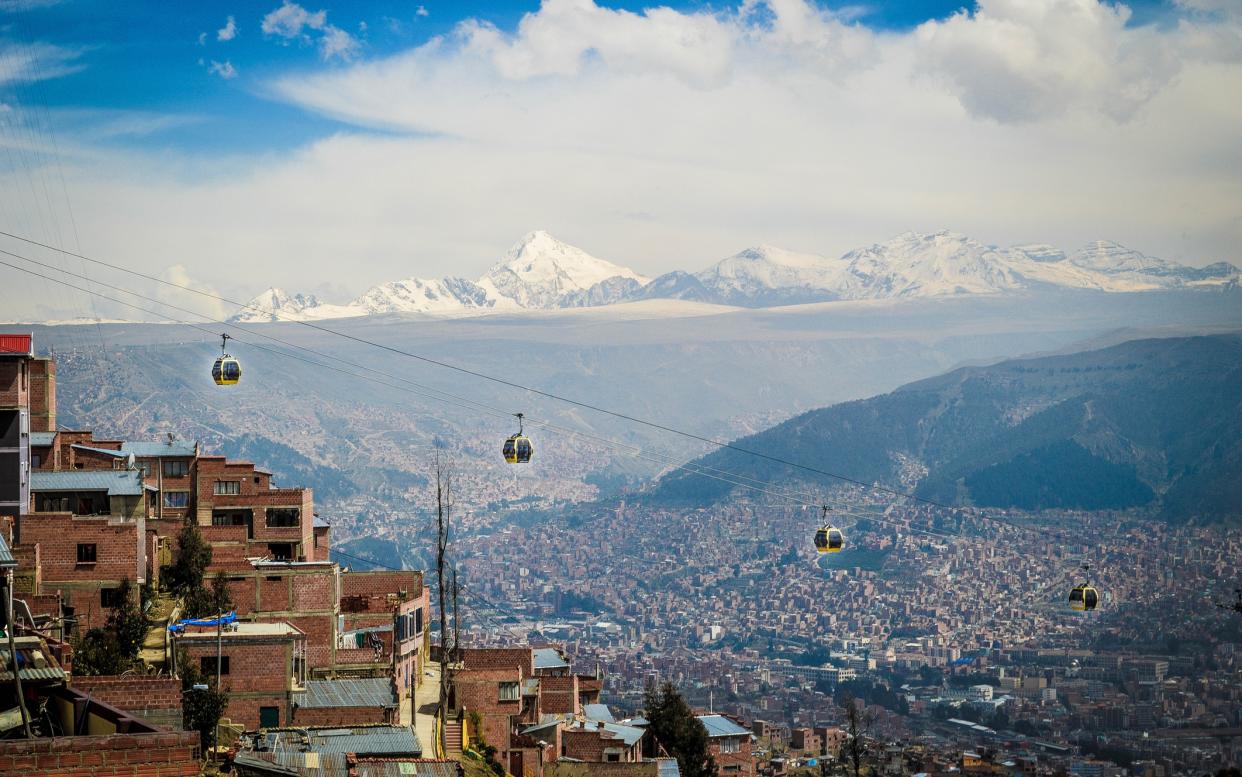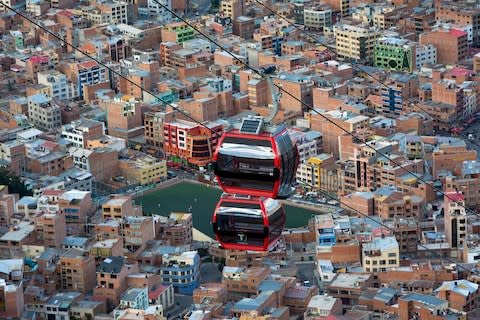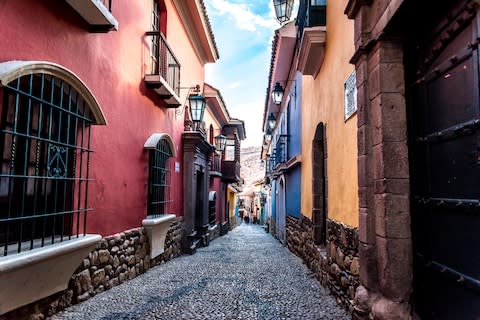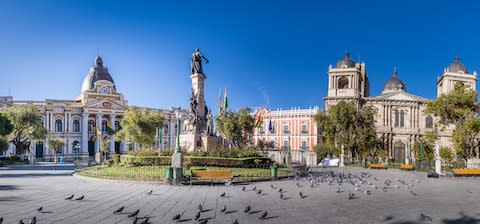The most spectacular public transport system on the planet – with tickets for 33p

The best things in life are free – or almost. A single ticket for La Paz’s cable car system – “Mi Teleférico” or “My Cable Car” – costs just 3 bolivianos, or 33p. Locals, using a new “intelligent ticket”, pay even less.
In exchange, you get access to the world’s largest high-altitude urban cable-car system – which, with the opening of the “Purple Line” two weeks ago, extends to eight lines or 17 miles. Built by Austrian firm Doppelmeyr, this awesome public works project has cost Bolivian taxpayers around $700m (£530m) since its inception in 2014 – and three more lines are envisaged.
Respect to the builders, who’ve managed to weave a network of routes into a teeming, tortuously inclined capital city without knocking down scores of houses or destroying what few green spaces remain.
Engineering apart, “Mi Teleférico” is the best public transport system in the Americas and, short of a vintage Caddy in Havana, probably the best way to see any metropolis.
Spread over a deep, wide canyon, La Paz’s districts range from 3,170m (10,150 feet) to 3,600m (11,800 feet) above sea level. When I first visited in the Nineties, you either walked everywhere – a lung-busting, exhaust fume-sucking endeavour – or jumped in tiny beat-up minibuses and prayed.

Invariably, you stuck to the city centre and your hotel district. Only the intrepid or reckless would hike or ride into the outer burbs – not only because of the poverty, automatically associated with crime, but because travellers are lazy. How many foreign visitors to London trip out to Walthamstow or Uxbridge?
Mi Teleférico opens up, from a condor’s perspective, an entire city, from football stadia to cemeteries to churches, parks and plazas. It provides an unobtrusive angle on the world of the cholas – the mestizo women dressed in bowlers and tiered skirts who sell snacks such as salteñas (pasties), clothes, fresh fruit and veg and sweets on the narrow pavements. It affords a self-satisfied godlike gaze over the stalled traffic that clogs La Paz’s sinuous highways.

Gliding through the sky at a steady 11mph, it allows plenty of time to survey the city’s mountainous bowl and the lunar rock formations that lie around the rim like invading Aymara warriors. It also hints at the social fissures. The Green line, from the upscale and (relatively speaking) low-altitude Zona Sud, passes over a ridge topped by smart, high-walled modern houses.
“They were none too pleased about the opening of the line,” explains local guide, Grace. “Some people have even moved away and left their houses vacant.”
Perhaps it’s this kind of nimbyism that has kept similar transit systems out of other hilly cities – Los Angeles, say, or Edinburgh.
I enjoy the riding as much as the arriving. The yellow line takes me to Sopocachi, a convivial neighbourhood of restaurants, low-slung houses and little bars. The White line, opened in March by president Evo Morales – with an offering to the Pachamama or indigenous “earth mother” – goes to Miraflores, a sometime fruit-growing area turned densely populated barrio. The Blue line hops from Avenida del Libertador – or Chuqui Apu (all 39 cable-car stations have an Ayamara as well as a Spanish name) – to the fascinating historic centre, the highest part of La Paz proper.

If that’s not high enough for you, try the new Purple line. It stops only once as it whisks me in 8 minutes from downtown to El Alto – 400+ metres (1300+ feet) higher. Formerly a suburb, El Alto is now a city in its own right, home to almost a million people. The new fast track up means backpackers can get to the international airport for pennies. I’d strongly recommend everyone riding up to see Freddy Mamani’s Power Rangers-inspired “cholet” tower blocks – pitched as New Andean architecture – that have been making news in recent years.
In Medellín, Colombia, I’d seen how a cable-car system can have a transformative effect on a city. Residents of marginal areas – usually high places, where land is cheaper and/or less firm – suddenly have easy access to the main centre, and to jobs. They can commute without taking a series of buses or getting up at 4am.
La Paz is the same, but on a massive scale.

“Paceños are really proud of the teleférico,” says Grace. “People travel from El Alto down to the south as tourists, and middle-class people go in the opposite direction. At first, it seemed strange, but the cable-cars make it natural to travel together, to mix more.”
It’s not only the price of the tickets. The quiet up there in the heavens is soothing. The astonishing frequency of services – I counted a gondola arriving every 15 seconds – makes all my years waiting Godot-like for the Tube and rural buses seem like some kind of undue punishment.
But, actually, the cable-car makes all other forms of public transport seem obsolete, as well as very boring – rather as La Paz, shimmering and sprawling beneath snow-capped Mount Illimani, makes megarich London or megasized Beijing, seem rather dull.
See www.miteleferico.bo. Guided ours bookable through boliviamilenaria.com and, in the UK, geodyssey.co.uk.

